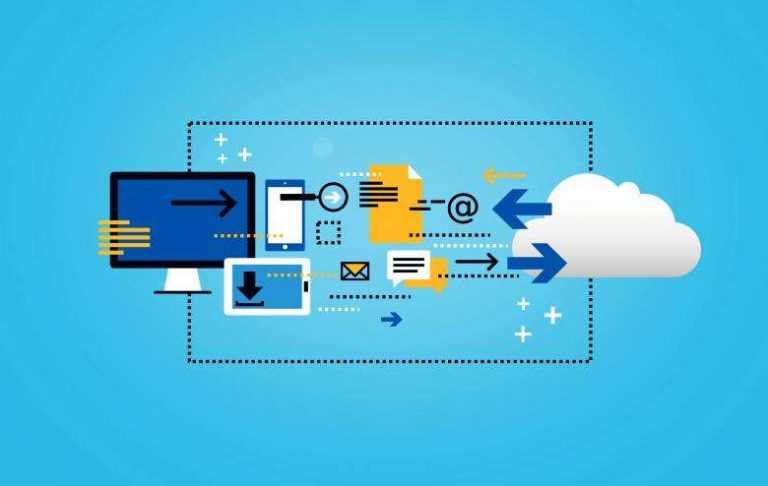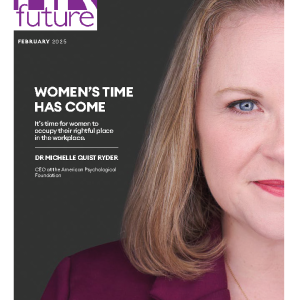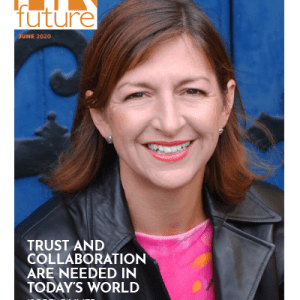Human Resources feels pressure to begin using predictive analytics.
Today’s business executives are increasingly applying pressure to their Human Resources departments to “use predictive analytics”. This pressure isn’t unique to Human Resources as these same business leaders are similarly pressuring Sales, Customer Service, IT, Finance and every other line of business (LOB) leader, to do something predictive or analytical.
Every line of business (LOB) is clear on their focus. They need to uncover predictive analytics projects that somehow affect their bottom line (increase sales, increase customer service, decrease mistakes, increase calls per day and the like).
Human Resources departments have a different, and somewhat unique, challenge not faced by most other lines of business. When Human Resources analysts begin a predictive analytics initiative, what we see mirrors what every other line of business does. Somehow for HR, instead of having a great outcome, it can be potentially devastating.
Unless the unique challenge HR faces is understood, it can trip up an HR organisation for a long time, cause them to lose analytics project resources and funding, and continue to perplex HR as they have no idea how they missed the goal of the predictive initiative so badly.
HR’s traditional approach to predictive projects
Talent analytics’ experience has been that (like all other lines of business) when Human Resources focuses on predictive analytics projects, they look around for interesting HR problems to solve; that is, problems inside the Human Resources departments. They’d like to know if employee engagement predicts anything or if they can use predictive work somehow with their diversity challenges or predict a flight risk score that is tied to how much training or promotions someone has or see if the kind of onboarding someone has relates to how long they last in a role. Though these projects have tentative ties to other lines of business, these projects are driven from an HR need or curiosity.
HR (and everyone else) needs to avoid the “Wikipedia approach” to predictive analytics
Our firm is often asked if we can “explore the data in the HR systems” to see if we can find anything useful. We recommend avoiding this approach as it is exactly the same as beginning to read Wikipedia from the beginning (like a book) hoping to find something useful.
When exploring HR data (or any data) without a question, what you’ll find are factoids that will be “interesting but not actionable”. They will make people say, “Really, I never knew that,” but nothing will result. You’ll pay an external consultant a lot of money to do this, or have a precious internal resource do this – only to gain little value without any strategic impact. Avoid using the “Wikipedia approach” – at least at first. Start with a question to solve. Don’t start with a dataset.
Human Resources predictive project results are often met with little enthusiasm
Like all other lines of business, HR is excited to show results of their HR focused predictive projects. The important disconnect is that HR shows results that are meaningful to HR only.
Perhaps there is a prediction that ties the number of training classes to attrition, or correlates performance review ratings with how long someone would last in their role. This is interesting information to HR but not to the business.
Here’s what’s going on.
Business outcomes matter to the business. HR outcomes don’t. Human Resources departments can learn from the Marketing Department which came before them on the predictive analytics journey. Today’s Marketing Departments using predictive analytics successfully, are arguably one of the strongest and most strategic departments of the entire company.
Today’s marketing leaders predict customers who will generate the most revenue (have high customer lifetime value). Marketing departments did not gain any traction with predictive analytics when they were predicting how many prospects would “click”. They needed to predict how many customers would buy.
Early predictive efforts in the marketing department used predictive analytics to predict how many webinars they’ll need to conduct to get 1,000 new prospects in their prospect database. Or, how much they’d need to spend on marketing campaigns to get prospects to click on a coupon. (Adding new prospect names to a prospect database is a marketing goal not a business goal. Clicking on a coupon is a marketing goal not a business goal). Or, they could predict that customer engagement would go up if they gave a discount on a Friday (again, this is a marketing goal not a business goal. The business doesn’t care about any of these “middle measures” unless they can be proved and tracked to the end business outcome.
Marketing cracked the code
Business wants to reliably predict how many people would buy (not click) using this coupon vs that one. When marketing predicted real business outcomes, resources, visibility and funding quickly became available.
When marketing was able to show a predictive project that could identify what offer to make so that a customer bought and sales went up – business executives took notice. They took such close notice that they highlighted what Marketing was able to do, they gave Marketing more resources and funding and visibility. Important careers were made out of marketing folks who were/are part of strategic predictive analytics projects that delivered real revenue and/or real cost savings to the business’s bottom line.
Marketing stopped being “aligned” with the business, marketing was the business. Human Resources needs to do the same thing.
Best approach for successful and noteworthy predictive workforce projects
Many people get tangled up in definitions. Is it people analytics, workforce analytics, talent analytics or something else? It doesn’t matter what you call it, the point is that predictive workforce projects need to address and predict business outcomes not HR outcomes.
Like marketing learned over time, when Human Resources begins predictive analytics projects, they need to approach the business units they support and ask them what kinds of challenges they are having that might be affected by the workforce.
There are two critical categories for strategic predictive workforce projects:
– Measurably reducing employee turnover/attrition in a certain department or role; and
– Measurably increasing specific employee performance (real performance not performance review scores) in one role or department or another (that is, more sales, fewer mistakes, higher customer service scores, less accidents).
I say “measurably” because, to be credible, the predictive workforce initiative needs to measure and show business results both before and after the predictive model.
For greatest ROI: businesses must predict performance or flight risk pre-hire
Once an employee is hired, the business begins pouring significant cost into the employee, typically made up of a) their salary and benefits b) training time while they ramp up to speed and deliver little to no value. Our analytics work measuring true replacement costs show us that even for very entry level roles a conservative replacement estimate for a single employee (Call Center Rep, Bank Teller and the like) will be over $6,000.
A great example, is to consider the credit industry. Imagine them extending credit to someone for a mortgage – and then applying analytics after the mortgage has been extended to predict which mortgage holders are a good credit risk. It’s preposterous.
The only thing the creditor can do after the relationship has begun is to try to coach, train, encourage, change the payment plan and the like. It’s too late after the relationship has begun.
Predicting credit risk (who will pay their bills) – is predicting human behaviour. Predicting who will make their sales quota, who will make happy customers, who will make mistakes, who will drive their truck efficiently is also predicting human behaviour.
HR needs to realise that predicting human behaviour is a mature domain with decades of experience and time to hone approaches, algorithms and sensitivity to private data.
What is Human Resources’ role in predictive analytics projects?
The great news is that typically the Human Resources Department will already be aware of both of these business challenges. They just hadn’t considered that Human Resources could be a part of helping to solve these challenges using predictive analytics.
Many articles discuss how Human Resources needs to be an analytics culture, and that all Human Resources employees need to learn analytics. Though I appreciate the realisation that analytics is here to stay, Human Resources of all people should know that there are some people with the natural mindset to “get” and love analytics and there are some that don’t and won’t.
As I speak around the world and talk to HR professionals, I can sense the fear felt today by people in HR who have little interest in this space. My recommendation would be to breathe, take a step back and realise that not everyone needs to know how to perform predictive analytics. Realise there are many traditional HR functions that need to be accomplished. We recommend a best practice approach of identifying who does have the mindset and interest in the analytics space and letting them partner with someone who is a true predictive analyst.
For those who know they are not cut out to be the person doing the predictive analytics there are still many roles where they can be incredibly useful in the predictive process. Perhaps they could identify problem areas that predictive analytics can solve, or perhaps they could be the person doing more of the traditional Human Resources work. I find this “analytics fear” paralyses and demoralises employees and people in general.
Loosely identified, but important roles on a predictive workforce analytics project
1. Someone to identify high turnover roles in the lines of business or identify where there are a lot of employees not performing very well in their jobs;
2. A liaison: someone to introduce the HR predictive analytics team to the lines of business with turnover or business performance challenges;
3. Someone to help find and access the data to support the predictive project;
4. Someone to actually “do” the predictive analytics work (the workforce analyst or data scientist);
5. Someone who creates a final business report to show the results of the work (both positive and negative);
6. Someone who presents the final business report;
7. A high level project manager to help keep the project moving along; and
8. The business and HR experts that understand how things work and need to be consulted all along the way.
These roles can sometimes all be played by the same person, and sometimes they can be many different people depending on the complexity of the project, the size of the predictive workforce organisation, the number of lines of business that are involved in the project and/or the multiple areas where data needs to be accessed.
The important thing to realise is there are several non analytics roles inside of predictive projects. Not every role in a predictive project requires a predictive specialist or even an analytics savvy person.
High value predictive projects don’t deliver HR answers
We started by describing how business leaders are pressuring Human Resources to do predictive analytics projects. There is often little or no guidance given to HR about what predictive projects to do.
Here is my prediction and you can take it to the bank. I’ve seen it happen over and over again.
When HR departments use predictive analytics to solve real, line of business challenges that are driven by the workforce, HR becomes an instant hero. These Human Resources departments are given more resources, their projects are funded, they receive more headcount for their analytics projects and, like Marketing, they will turn into one of the most strategic departments of the entire company.
Greta Roberts is the CEO and Co-founder of Talent Analytics, Corp., www.talentanalytics.com. She is the Programme Chair of Predictive Analytics World for Workforce and a Faculty member of the International Institute for Analytics. Follow her on twitter @gretaroberts.
This article appeared in the December 2015 issue of HR Future magazine.

























